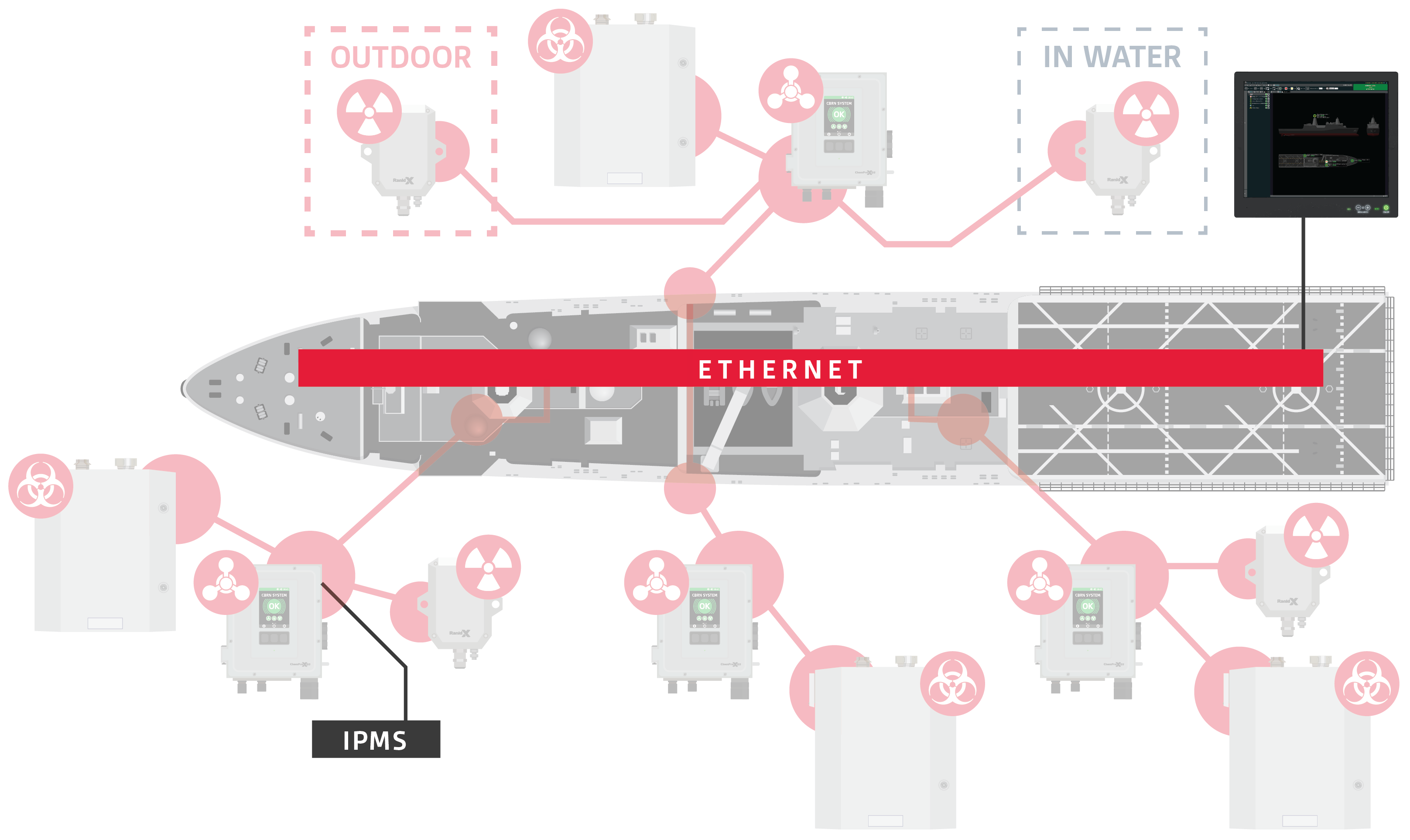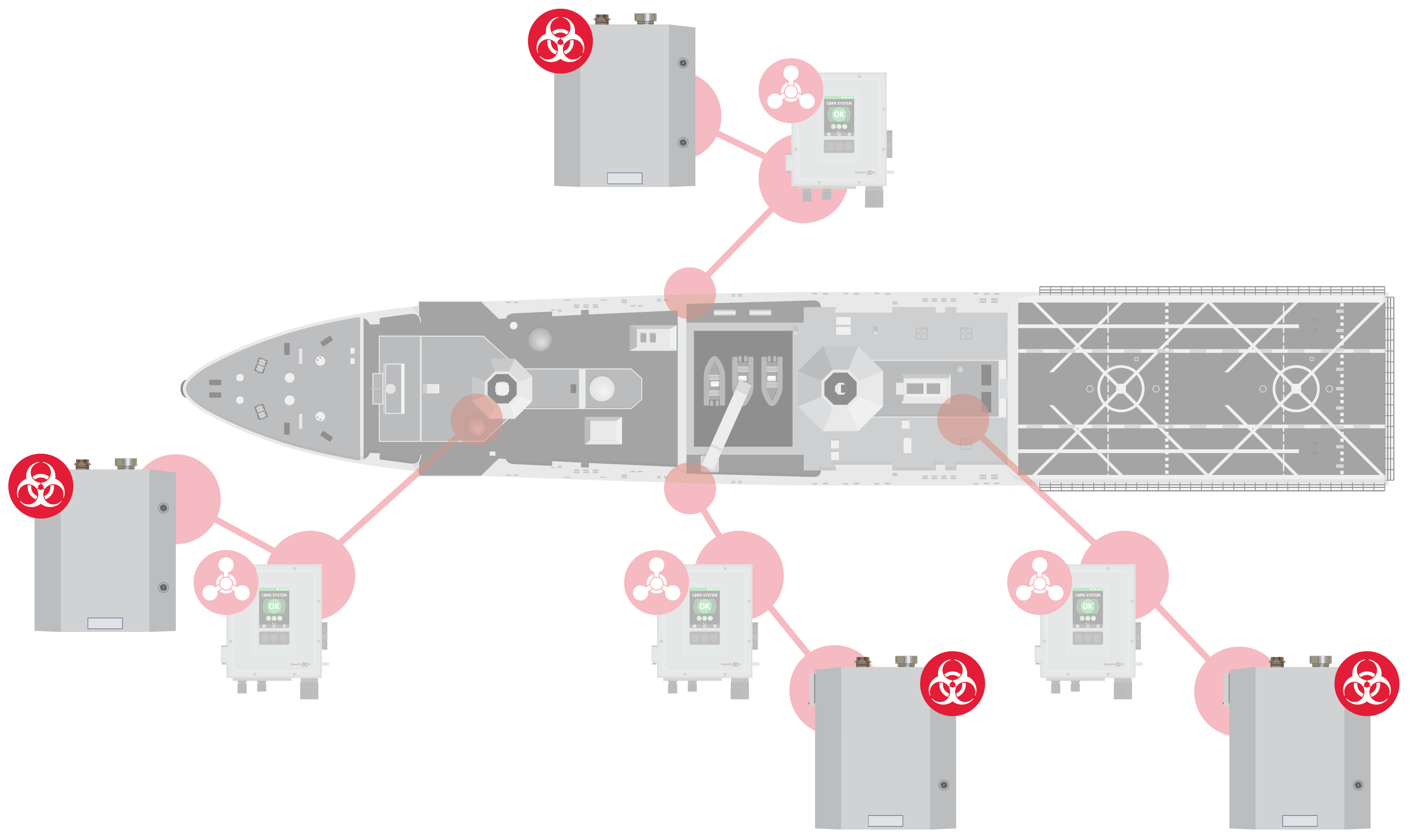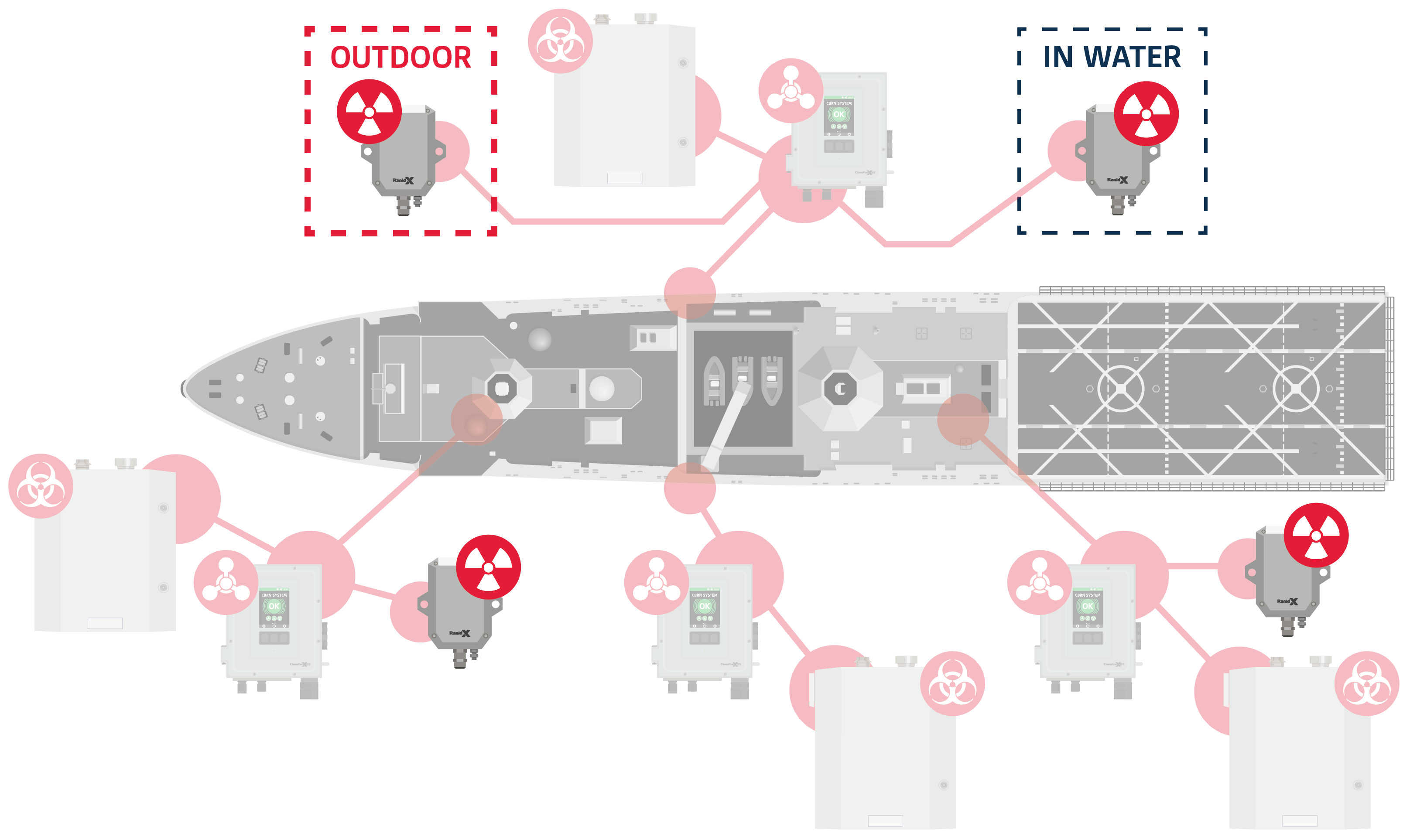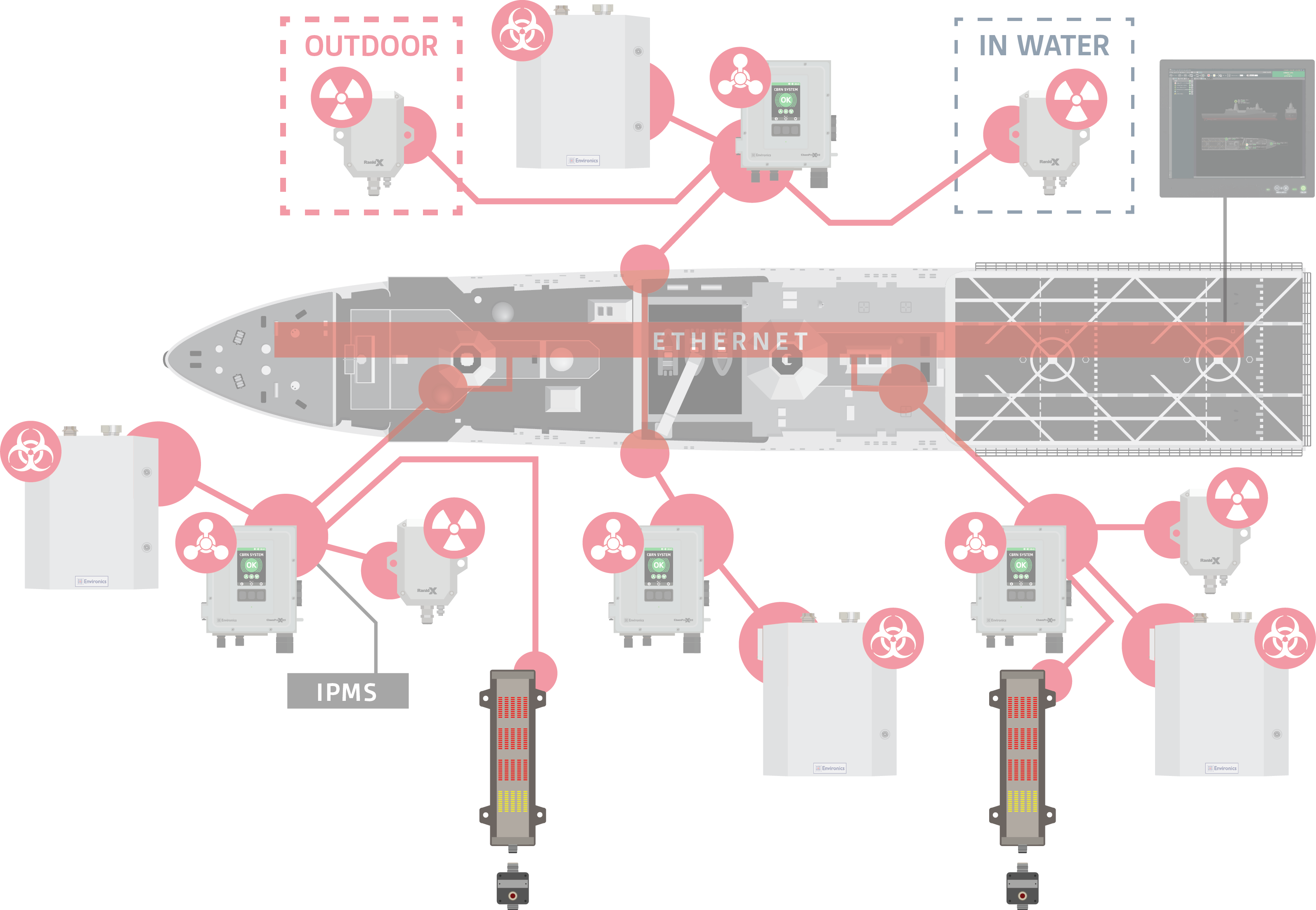Frigate Vessels: Multifunction Naval Ships
Frigate vessels are one of the most common naval ship types, and they are used by most of the navies. These ships are also the largest segment in the naval vessel market. According to the market analysis, globally, there will be over 200 frigates built before year 2030.
In addition to their military role, frigates are also used in conflict operations in peace time and in the humanitarian operations. Due to their role as a multifunction ships, the protection of the crew and other people on board against ever-changing hazards, is even of greater importance than in traditional war ships.
Why is Naval Vessel CBRN Protection Needed?
The main purpose of naval vessel CBRN protection is to protect ship crew, when chemical, biological or radiological threat is present.
The key to effective protection is fast early warning of the possible threat. It is important to get the warning as soon as possible, because every second is valuable in a CBRN threat situation. External detection system provides information of the threat outside of the vessel and enables timely protective measures, like starting the CBRN filtration system. After protecting the crew and vessel, it is important to monitor internal conditions, in addition to outdoor contamination, while still being inside the hazard zone.
Naval CBRN Monitoring Systems Specifications for Frigate Vessels
There are many ways to make a specification of a CBRN system for a naval vessel. System specification can be based on the end-user requirements, shipyard specification or Classification Society member guidance.
In most of the cases, all of these stakeholders are involved in defining the best possible configuration for the user needs. Different classification society bodies have their own guidance and rules for the CBRN protection systems for naval vessels and in the following example — a frigate with two citadels — we follow the guidance of DNV-GL.
All of the following highlighted quotations are from DNV-GL: RULES FOR CLASSIFICATION, Naval vessels, Part 3, Chapter 5 (Ed. 2015).
Chemical Detection System
“Detectors outside the citadel for chemical agents in the atmosphere”
One ChemPro chemical detector monitors the air in the front of, or close to air intake, or before the CBRN filtration on the starboard side of the ship. Other detector monitors the air in a similar location on the port side.
The detector can be located either outdoors, close to the air intake, or inside, and air sample would be taken with through bulkhead sampling system. The sampling system should be heated if the detector is in the air-conditioned room, to avoid any condensation in the sample air.
“One detector in the citadel for each damage control zone”
Each citadel should have one ChemPro chemical detector (ChemProX-DS) to ensure the safety of the crew in that enclosed environment. The detector can monitor air either right after the CBRN filter, from the air ducts after the filters or in the areas, which are the most critical for the ship’s operations e.g. bridge or command and control room. When the sample is taken from the air duct, a sampling system is needed, but the sample can be taken also from the ambient room air without any sampling lines.

Chemical detector locations in a frigate vessel with 2 citadels.
Biological Detection System
“A biological agents detection system shall be installed to detect and identify biological agents, and indicate the level of concentration.”
“The system for detecting biological agents shall be agreed upon with the Society.”
There is more freedom to design the biological detection system, but biological detection is recommended to be analogous to the chemical detection system, i.e. biological detectors should be located in same positions as chemical detectors. They can even utilize the same air sampling systems. So, there should be ENVI BioScout biological detectors on both sides of the vessel and one in each citadel.

Biological detector locations in a frigate vessel with 2 citadels.
Radiation Detection System
“Detector outside the citadel for radiation in the atmosphere”
One or more radiation detectors shall monitor radiation outside of the ship and warn the crew, if the radiation level increases above the threshold level.
If only one detector is used, it should be located in the position, where there are minimum obstacles to prevent radiation to approach the sensor from any direction. If several detectors can be used, they should be located in places, where they monitor certain sector radiation. Ship constructions can be used as a blockage to absorb radiation from certain directions. With a 3 or 4 detectors system, the direction of the radiation can be estimated.
“Detector for radiation in the water”
Water radiation detection is for monitoring the radioactive fallout in the seawater. Monitoring can be performed through the seawater pipeline wall. There is no need to install a sensor in the water, where the conditions are harsh and mechanical installation might possess a threat to the water circulation system.
“Detectors in the citadel for each damage control zone”
Detectors inside the ship should be located in the places where the crew spends most of the time and /or the rooms which are occupied by operators 24/7, like bridge, damage control room, command and control room, etc.
Detectors inside the ship should be located in the places where the crew spends most of the time and /or the rooms which are occupied by operators 24/7, like bridge, damage control room, command and control room, etc.

Radiation detector locations in a frigate vessel with 2 citadels.
Data Management & Situational Awareness
“Display of measuring values in combat information centre and on bridge.”
Information from different sensors must be collected reliably and visualized by the crew members.
In Environics system, different sensors are connected to Master Modules — data management units — which have the software interface for each sensor, for reliable data communication. Master Modules transfers the sensor data into a format which can be sent through the ethernet to the EnviScreen Situational Awareness software in the control centre.

Data management units locations in a frigate vessel with 2 citadels.
Sensor data can be — and in most of the cases will be — transferred into the IPMS (Integrated Platform Management System), but separate Situational Awareness Software gives more thorough picture of the hazard and also helps to analyse the hazardous situation. Dedicated software also advices the operators to act correctly during a stressful incident. This software operates also as a tool to monitor the status and condition of the system and each sensor, thus working as a maintenance tool.
“Adequate acoustic alarms which allow to differ the kind of danger shall be provided”
In addition to control center situational awareness system, External Alarm Units can be placed in different locations of frigate vessels to give the crew an audio-visual warning of possible hazards. The number and locations of Alarm Units depends on the size and structure of the ship.

External Alarm Units in the critical locations of the vessel to warn crew.

Leave a Reply